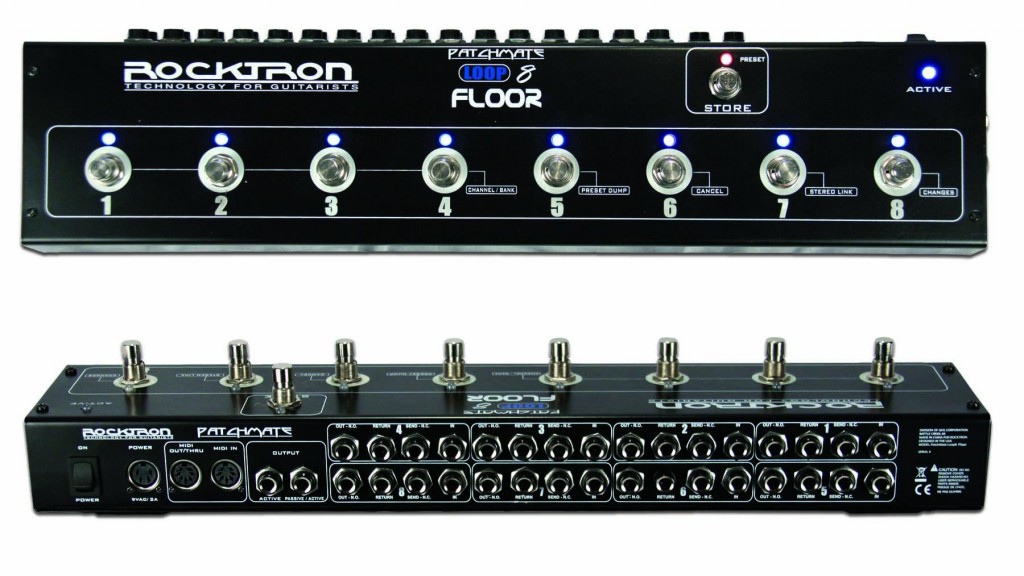
Like most guitar geeks I too am cursed with an incurable disease named GAS. For those who may have never heard of it before: it’s an acronym which stands for Gear Aquisition Syndrome, or the irresistible urge to try and buy new guitar gear. All this in the holy search for the ultimate sound.
Lately I’ve been pretty satisfied with my most basic gear: my main guitars and amplifiers haven’t changed for about two years now. However, what will always keep my GAS going is the world of so called stomp boxes. Small separate effects units, each with their single special purpose (e.g. chorus, reverb, overdrive,…). They are mostly operated by foot (‘stomped’), have some control knobs and the guitar signal enters on one side and exits processed on another side. Plain and simple.
What makes stompboxes so tempting to buy is the fact that they are relatively cheap (a small fraction of the price of a good guitar or amplifier), they all have their unique characteristics and you can combine them in an infinite number of ways. Every new stompbox may be a possible upgrade to your sound.
The only drawback in using stompboxes is that you often find yourself tapdancing during a performance. Getting the right pedals engaged on time sometimes requires life threatening manoevers – I’ve had moments where I almost fell off-stage in an attempt to disengage a compressor and engage an overdrive, a booster, a delay and a wah pedal, all in a fraction of a second.
It’s this drawback that made me decide I need something that can do the switching for me. In such a way that I only have to press one button and it ‘knows’ what effects to engage. These tools exist on the market these days, so I started an extensive investigation on which one would best suit my needs.

My use case would be to use the switcher for gain effects in the first place. Engaging a delay, tremolo, chorus or phaser a tad late is barely noticeable. However, engaging a compressor, a booster, an overdrive or a distortion a fraction off the beat can be very annoying. This also implies that the switcher should operate very fast and without any interruptions in the sound.
During my search I came across some interesting brands and types all with their pro’s and con’s:
Notice: The summary you’ll find below is not a review of these products. I haven’t tried all of them in real life. It’s just a reflection of my thoughts when reading documentations, viewing demo’s… related to my specific needs. They are all great products and are used by many people.
Rocktron PatchMate Loop 8 Floor
http://www.rocktron.com/patchmate-loop-8-floor.html

A very powerful, programmable switcher which makes it possible to control 8 effects loops with 8 presets. Each preset can be programmed. It offers the additional feature to choose how individual loops are connected.
What I didn’t really like about this switcher is the way presets are engaged: you would have to press a separate ‘preset-mode’ button each time before pressing the preset button itself. Two presses? I’d prefer just one!
Carl Martin Octa-Switch MKII
http://www.carlmartin.com/product_octaswitch_MK_2.htm

This is an easy to use and straightforward switcher. Eight effect loops, eight buttons, each button with it’s associated 8-pole DIP switch to preset which loops it engages. And then some extra features that are not essential for my needs. No complex programming, what you see is what you get.
The only drawback for me is that it is too deep. To force myself into keeping things simple I try to get things done with as little pedalboard space as possible. Loosing a whole row of effects space to a pedal switcher is not an option.
Palmer Octobus
http://www.palmer-germany.com/mi/en/OCTOBUS-8-channel-Programmable-Loop-Switcher-PEOCT.htm

An interesting switcher to control 8 effects loops. Fully programmable into 8 banks of 4 presets each.
The drawback here (for me, that is) is the number of presets per bank. Although 4 might be enough in most cases. I’d prefer not having to change banks if possible.
Also the buttons used to program the unit seem a bit cheap or fragile. When I think of some of the situations I’ve been in while playing, I’d prefer a tool that is ruggedized in any possible way.
One Control Chamaeleo Tail Loop MKII
http://www.one-control.com/chamaeleo-tail-loop-mark-ii.html

This one seemed very close to my specific needs. A perfectly sized unit with 5 loops (less than the others, but still enough for me) and 3 banks of 5 programmable presets each.
However, there’s not much technical info on the website and the unit’s availability is a bit unclear (to me, at least) for the region where I live.
Conclusion
I’ve come across a lot of pedal switchers lately. Some cheaper than others, but still expensive enough for me to go critical about their features. Until now I haven’t found the one unit that perfectly fits my needs. That’s why more and more I tend to feel a new DIY project coming up. I’ve put together some stomp boxes in the past, so how hard can it be to make a loop switcher? I mean a programmable loop switcher… of course!
